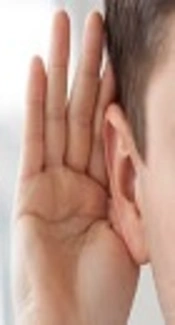Dear Editor,
Hearing loss following unsafe listening practices is a rapidly increasing condition for children, teenagers and young adults. Exposed subjects, their parents, involved professionals and legislators often underestimate the related risks (1).
Many sound sources of common use, such as earphones and loudspeakers, can produce decibel levels that may result in permanent hearing damage if not used carefully. Recently, the World Health Organization released a document stating that 1.1 billion young people, worldwide, could be at risk of hearing loss due to unsafe listening practices; of these, about 50% of teenagers and young adults between 12 and 35 years in middle- and high-income countries could be exposed to unsafe levels of noise following the use of personal audio devices and 40% may be exposed to potentially damaging sound levels during social leisure activities (2).
The pathophysiological mechanisms that underlie hearing loss following noise exposure have been extensively studied. They include direct mechanical trauma, metabolic exhaustion, ischemia, and ionic imbalance in the inner ear fluids and oxidative stress following increased levels of free radicals, that largely participate to the mechanisms that lead to cell death after noise exposure and sensorineural hearing loss in exposed subjects (3). In addition to direct damage to the inner ear, noise overexposure may also induce indirect extra auditory adverse effects, such as physical, psychological, and performance effects (1).
In the recent years, an increasing number of studies have been published about hearing damage following leisure activities, demonstrating a global interest in the field. A recent extensive systematic review on articles published between 1990 and 2015 on hearing loss and music exposure in children and teenagers found a prevalence of increased hearing levels (> 15 dB HL) in 9.6% of subjects, and high-frequency hearing loss in 9.3% (4). A large-scale US national health survey indicated that 12% to 15% of school-aged children have hearing deficits attributable to noise exposure (5). A German epidemiologic study showed that about 10% of adolescents have some degree of noise-induced hearing loss from leisure-time noise (6). A Chinese study found impaired hearing in 14% of ears in a cohort of 120 young users of personal listening devices (7). A French study conducted on 1364 young subjects found evidence of hearing problems in 12% of them in 66% of a subgroup that often attended rock concerts or used personal music players for more than one hour a day (8). A Korean study on 490 adolescents concluded that long-term exposure to music players could have a deleterious effect on hearing thresholds (9).
Most of the studies in the literature reported some level of hearing loss in subjects exposed to leisure noise, although many others did not show a significant association between clinical pure-tone audiogram thresholds and exposure to loud music (4). However, it should be noted that the very early signs of hearing loss following noise exposure are found in extended high frequencies (10 to 20 kHz), which are the first to deteriorate after noise exposure, presumably due to reduced levels of antioxidant enzymes in the basal, high frequency region of the cochlea (10). Unfortunately, these frequencies are not explored with the clinical audiogram. In addition to high-frequency audiometry, otoacoustic emissions may reveal early signs of hearing impairment not otherwise evident with clinical audiometric testing (10); this could explain the failure in revealing incipient noise-induced hearing loss with pure tone audiograms. Also, strong evidence supports the hypothesis that noise exposure effects may be cumulative, not being evident in the short term, but leading to significant hearing deficits in the long term in a dose-cumulative manner (1).
To date, most countries still have little legislation for noise exposure in recreational venues or with respect to the maximum output levels of personal devices. Thus, strategies for hearing preservation and protection are desirable; in most cases, they should rely on education of target subjects for dangerous behaviors. An increase in public awareness campaigns on the dangers of noise exposure, and introduction of educational programs in schools that make children aware of the possible consequences that may follow noise exposure are warranted.
In conclusion, noise exposure in children, adolescents, and young adults following unsafe listening practices may represent a serious threat for a yet vulnerable portion of the population, with possible irreversible immediate and late effects on hearing capabilities. Therefore, governments and healthcare professionals should be aware of these risks and invest in the education of parents and children about hearing loss prevention.
